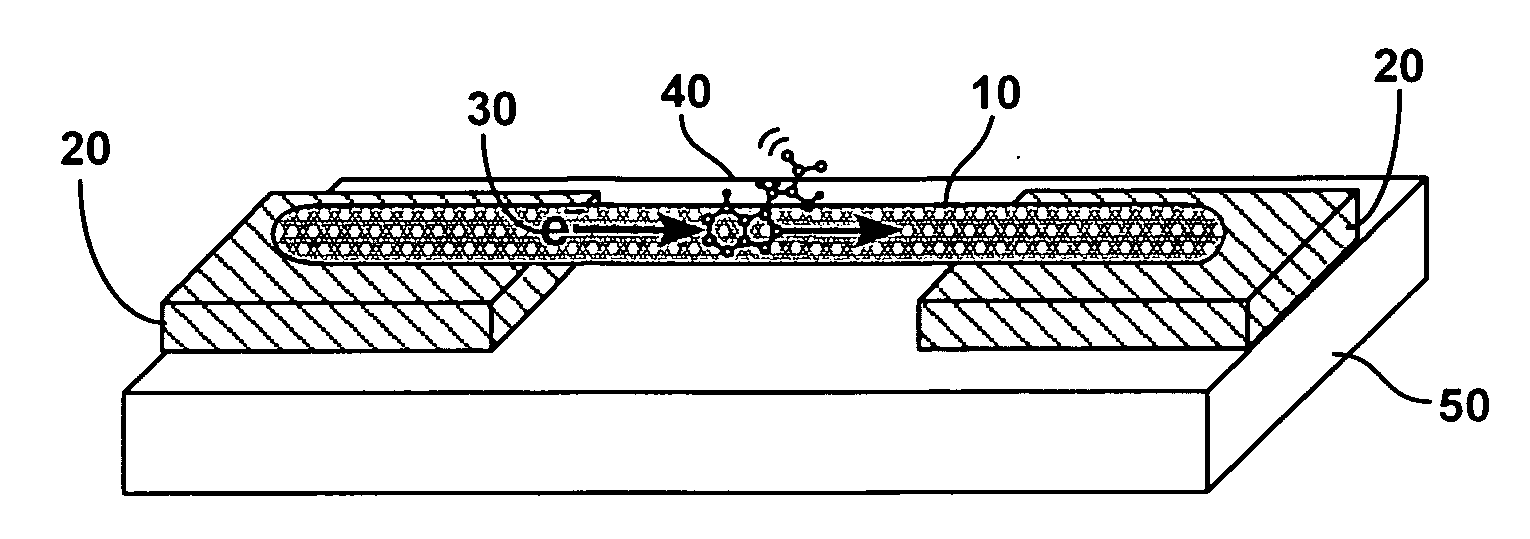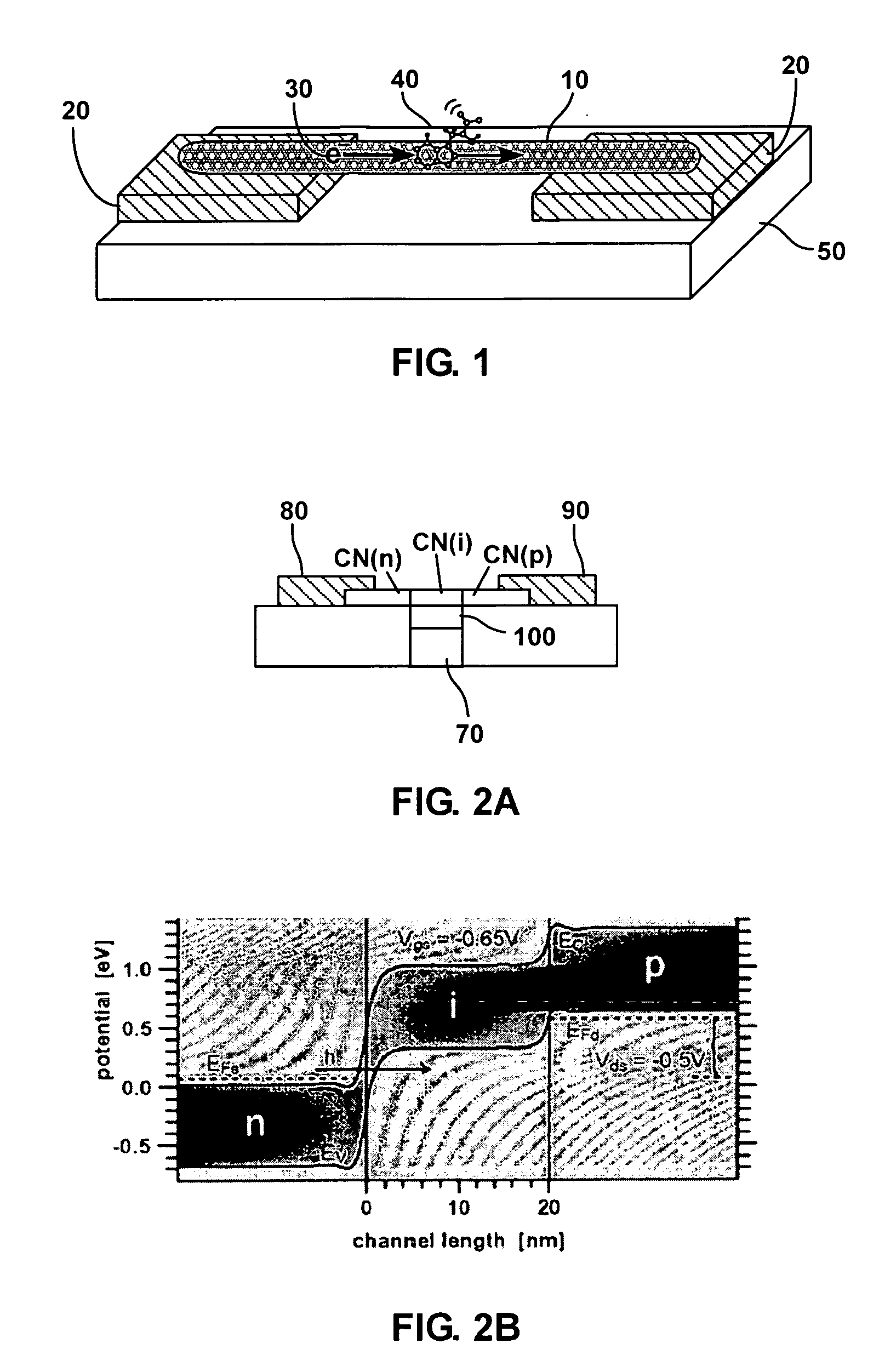Nanowire electron scattering spectroscopy
a nanowire electron scattering and spectroscopy technology, applied in the direction of optical radiation measurement, instruments, spectrometry/spectrophotometry/monochromators, etc., can solve the problems of inability to realize the full effect of the sensor, inability to realize the sensor, and inability to achieve the effect of reducing the cost of the functionalization step, facilitating the fabrication of the sensor system, and facilitating the electrical readou
- Summary
- Abstract
- Description
- Claims
- Application Information
AI Technical Summary
Benefits of technology
Problems solved by technology
Method used
Image
Examples
Embodiment Construction
[0026]FIG. 1 is a schematic diagram showing a nanotube or nanoscale wire (nanowire) 10 connected with at least two electrodes 20, thus forming a nanotube suspended bridge. The person skilled in the art will understand that a nanoscale wire has a nanoscale diameter (less than 100 nm), but may have a much longer length on the order of microns or more. The micron scale length enables practical external coupling via electrode contacts in order to monitor the unique electrical properties associated with the nanometer cross-sectional dimensions. Electrons 30 are injected at energies determined by the voltage bias across the nanotube 10. When electron energies correspond to particular molecular vibrational levels in attached molecules 40, enhanced electronic scattering leads to a measurable change in conductance at that voltage. Also shown in the figure is a substrate 50. Typical voltage biases will range from zero to several hundred milli-electron volts (meV) (for example, approximately 0...
PUM
| Property | Measurement | Unit |
|---|---|---|
| energy | aaaaa | aaaaa |
| diameter | aaaaa | aaaaa |
| voltage | aaaaa | aaaaa |
Abstract
Description
Claims
Application Information
 Login to View More
Login to View More - R&D
- Intellectual Property
- Life Sciences
- Materials
- Tech Scout
- Unparalleled Data Quality
- Higher Quality Content
- 60% Fewer Hallucinations
Browse by: Latest US Patents, China's latest patents, Technical Efficacy Thesaurus, Application Domain, Technology Topic, Popular Technical Reports.
© 2025 PatSnap. All rights reserved.Legal|Privacy policy|Modern Slavery Act Transparency Statement|Sitemap|About US| Contact US: help@patsnap.com



